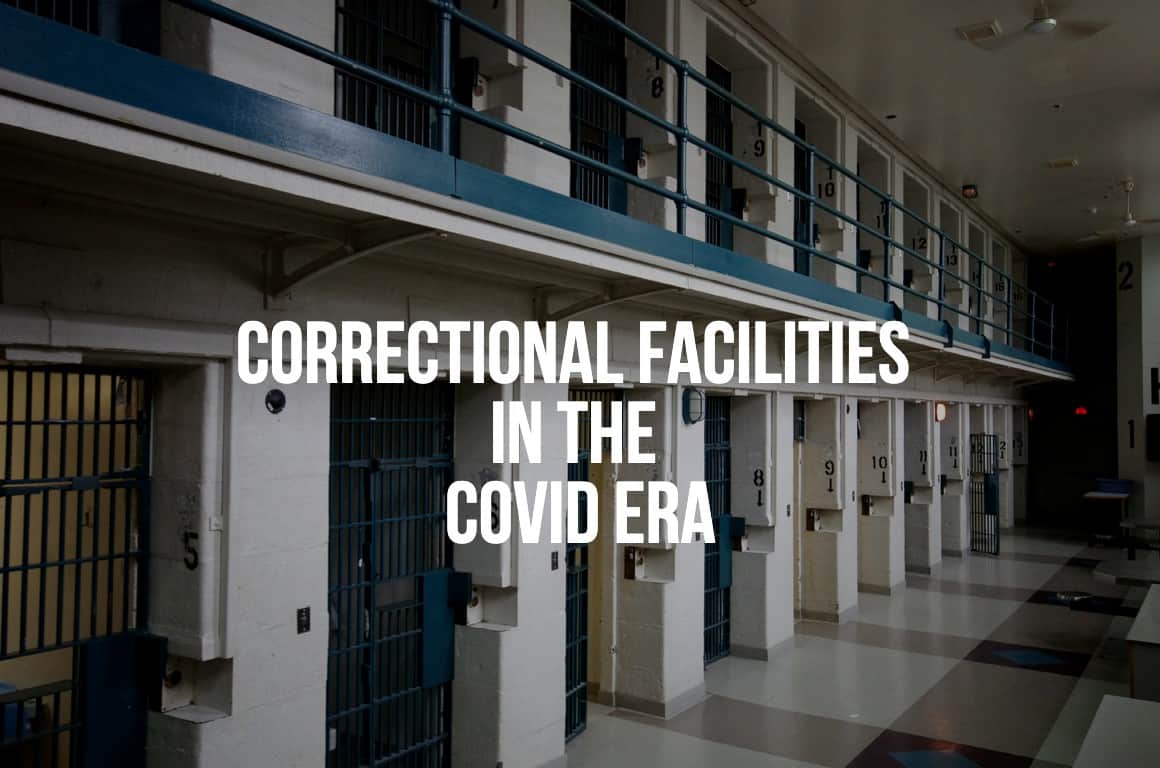Correctional Facilities in the Covid Era

For most Canadians, correctional centres are like the underside of a couch. We all know they’re there, and we all know they’re probably filled with a number of unsightly problems that need to be addressed, such as accumulating dust/mold/cobwebs, or long-lost items like pens, TV remotes and cat toys. And yet, the vast majority of us prefer to ignore those dark crevasses and just go about our lives. Because it’s easier that way. Because those dark crevasses are out of sight and out of mind.
For a long time, it’s that prejudiced and dismissive way of thinking about correctional facilities that has made it very difficult for anyone – civil rights groups, lawyer associations, politicians – to successfully negotiate better conditions for inmates. It’s no secret: our jails and penitentiaries are overcrowded and unsanitary.
But in the age of a worldwide pandemic such as Covid-19, all of these “out of sight and out of mind” problems are becoming dangerously amplified. In Canada, and across the world, important measures are being taken to limit the impact of the virus on the incarcerated population, as well correctional facilities personnel, and society at large.
The Canadian Civil Liberties Association (CCLA) has recently issued a list of strong recommendations which include:
- Release inmates held in pre-trial custody and therefore presumed innocent by the legal system
- Where it’s not a threat to public safety, release people charged at the scene of an alleged offence instead of bringing them into custody
- Facilitate parole and probation hearings quickly over phone or video-conferencing
- Provide inmates with the option of having virtual visits and programming
- Consider conditional and compassionate releases.
In the words of CCLA executive director Michael Bryant in a letter to Attorney General of Canada David Lametti:
Unlike public health care and emergency funding measures, the criminal justice system in Canada has not seen an intergovernmental, co-ordinated response to flatten the curve of the pandemic [..] In a nutshell, a public health approach would necessitate that the releasable be released; that detention be a measure of last resort.
Here’s a snapshot of recent developments pertaining to how correctional facilities are limiting the spread of Covid-19:
Canada:
- On March 13th, provincial jails temporarily suspended all family visits. Alternatively, all inmates are to receive calling cards in order to contact their loved ones. Additionally, all volunteer and community-based activities, such as AA meetings, have been cancelled. And transfers to and from jails and courthouses will be reduced to an absolute minimum.
- On March 14th, federal penitentiaries followed Quebec’s guidelines and suspended all family visits
- On March 20th, the government temporarily suspended the obligation of discontinued jail time for sentenced individuals. Discontinued jail time allows for a jail term to be served intermittently (usually over weekends) rather than as a long continuous term. It is applicable to sentences of 90 days and under, and individuals with such sentences have the strict obligation to show up at the correctional facilities at specific times. As an alternative, these individuals will now have to spend their weekends at home instead of at the jail, subject to calls and verifications from probation officers. Let’s call it weekend house-arrest.
- On March 20th, Ontario announced it would be releasing some low-risk prisoners early, to reduce the toll of covid-19 on Ontario’s jails.
International:
- On March 16th, Italy adopted a decree that, among other measures, would allow for early supervised release of prisoners with less than 18 months left to serve on their sentence. Patrizio Gonnella, head of Antigone, Italy’s leading prisoner rights organization, estimates the measure could lead to the release of at most 3,000 detainees.
- On March 17th, Los Angeles, home to the largest county jail system in the United States, began actively reducing its jail population and reducing daily police arrests.
- On March 17th, Iran released more than 85,000 prisoners, mostly non-violent offenders serving short prison sentences.
- On March 22nd, the Iowa Department of Corrections announced its plan to expedite the release of about 700 inmates who were already determined eligible for release by the Iowa Board of Parole
- On March 24th, New York State announced the release of vulnerable prisoners, which would include people who were arrested for minor crimes (misdemeanor charges, light sentences of less than a year) and those most vulnerable to infection due to underlying health problems. However mayor De Blasio said he wouldn’t release inmates serving time for domestic violence or sexual assault.
If you’ve been convicted of a crime, call Ginzburg Legal in Montreal to speak with a criminal defense lawyer.
Ginzburg Legal
405 Rue Marie-Morin
Montréal QC
H2Y 2Y1
(514) 710-6749



